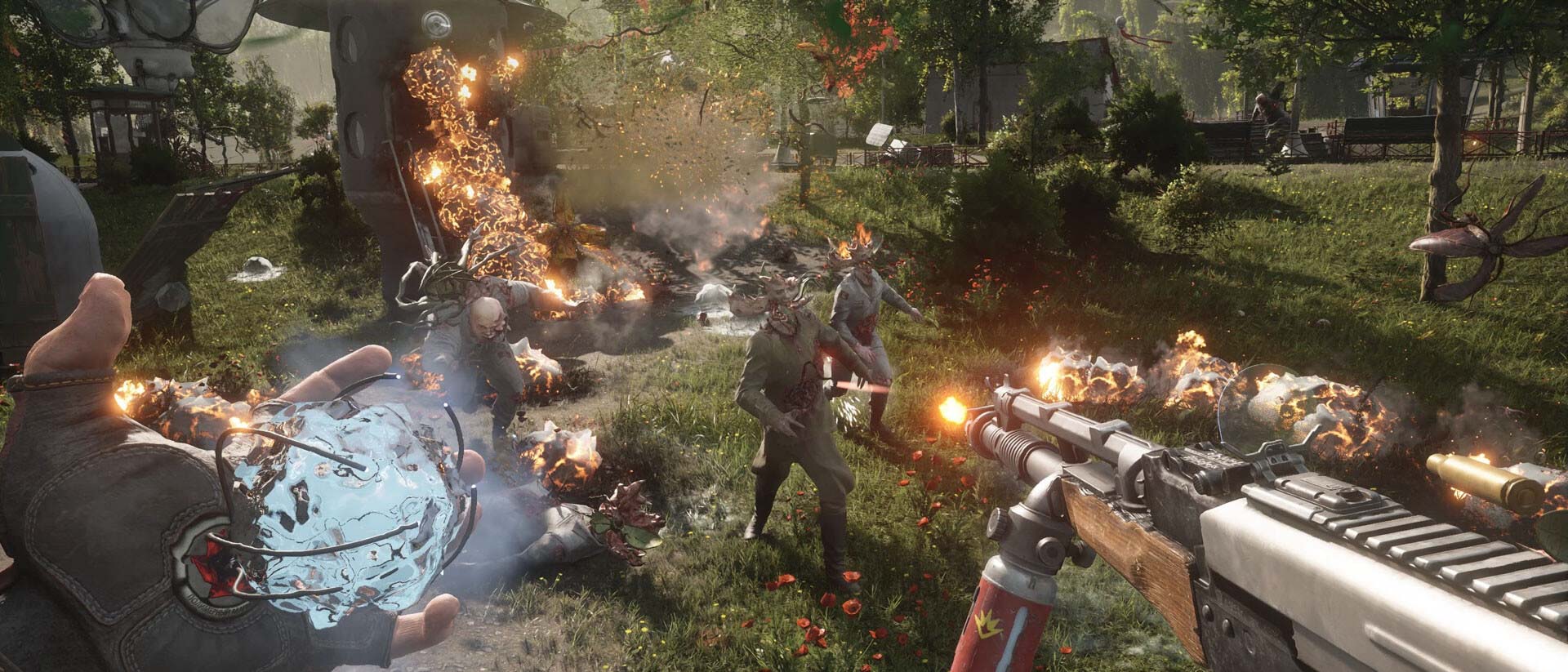Tom's Guide Verdict
Atomic Heart wants to be BioShock, but the tone of its narrative rubber-bands in quality. It's hard to tell which parts are poorly written, and which are intentionally comedic. By contrast, the environmental and character designs are excellent, which makes it worth pushing through the rougher sections. Atomic Heart is a spectacle, and it's got more highs than lows.
Pros
- +
Beautiful environmental design.
- +
Linear sections are well-paced and fun.
- +
Excellent graphics.
Cons
- -
Surface-level use of the alternate universe setting.
- -
Wild variation in tone.
- -
Open-world sections are mediocre.
Why you can trust Tom's Guide
Platforms: PC, PS4, PS5, Xbox One, Xbox Series X/S
Price: $60
Release Date: February 20, 2023
Genre: Action/RPG
Atomic Heart has seemed like a pipe dream ever since its 2018 reveal. In a world of homogenous big-budget free-to-play multiplayer titles, Atomic Heart was a breath of fresh air: a single-player adventure set in an eclectic, alternate-history Soviet Union.
During the five years since, we've seen a single-player renaissance, and the competition is stiff for Mundfish's first title. Fortunately, a day-one release on Xbox Game Pass and a unique premise allow the game to stand out. Read on for our full Atomic Heart review.
Atomic Heart review: Story and setting
In Atomic Heart, you take on the role of Major Sergei Nechaev, codename P-3, in an alternate-history 1955. In this universe, the invention of a miraculous programmable substance called Polymer propelled the Soviet Union into technological supremacy.
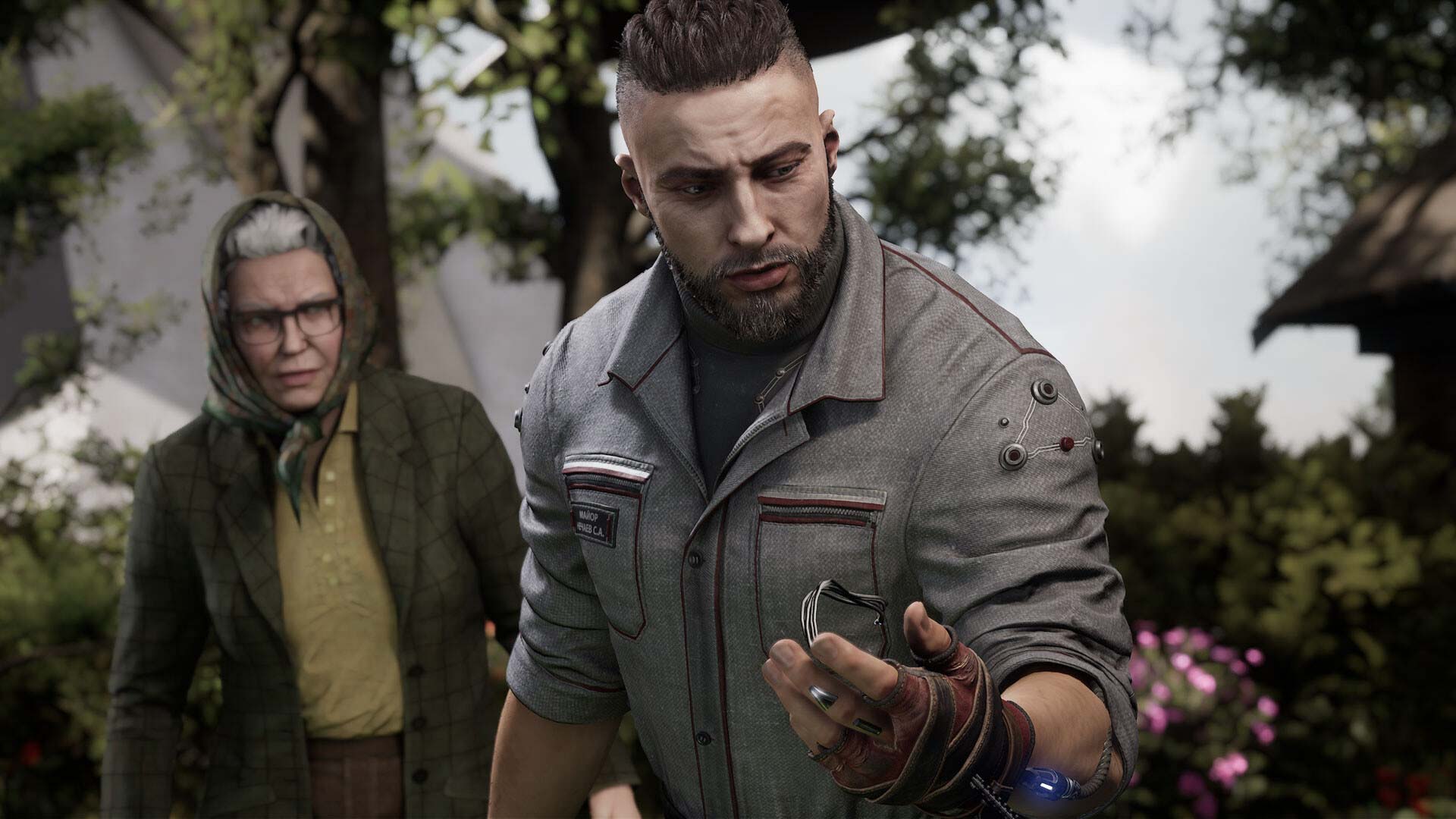
Instead of desperately trying to recover from Stalinism, the Soviet Union is filled with breathtaking inventions. Robotics, in particular, have advanced well beyond what we're capable of today, and automatons take care of much of the menial labor.
As the game begins, the Major is visiting Facility 3826, the Soviet Union's foremost scientific research complex. There, he will witness the most significant Soviet breakthrough to date: Polymerization. Through this process, Polymer can integrate into the human body, allowing people to use "Thought" neural interfaces. These allow them to communicate with each other, learn skills instantly and control robots remotely.
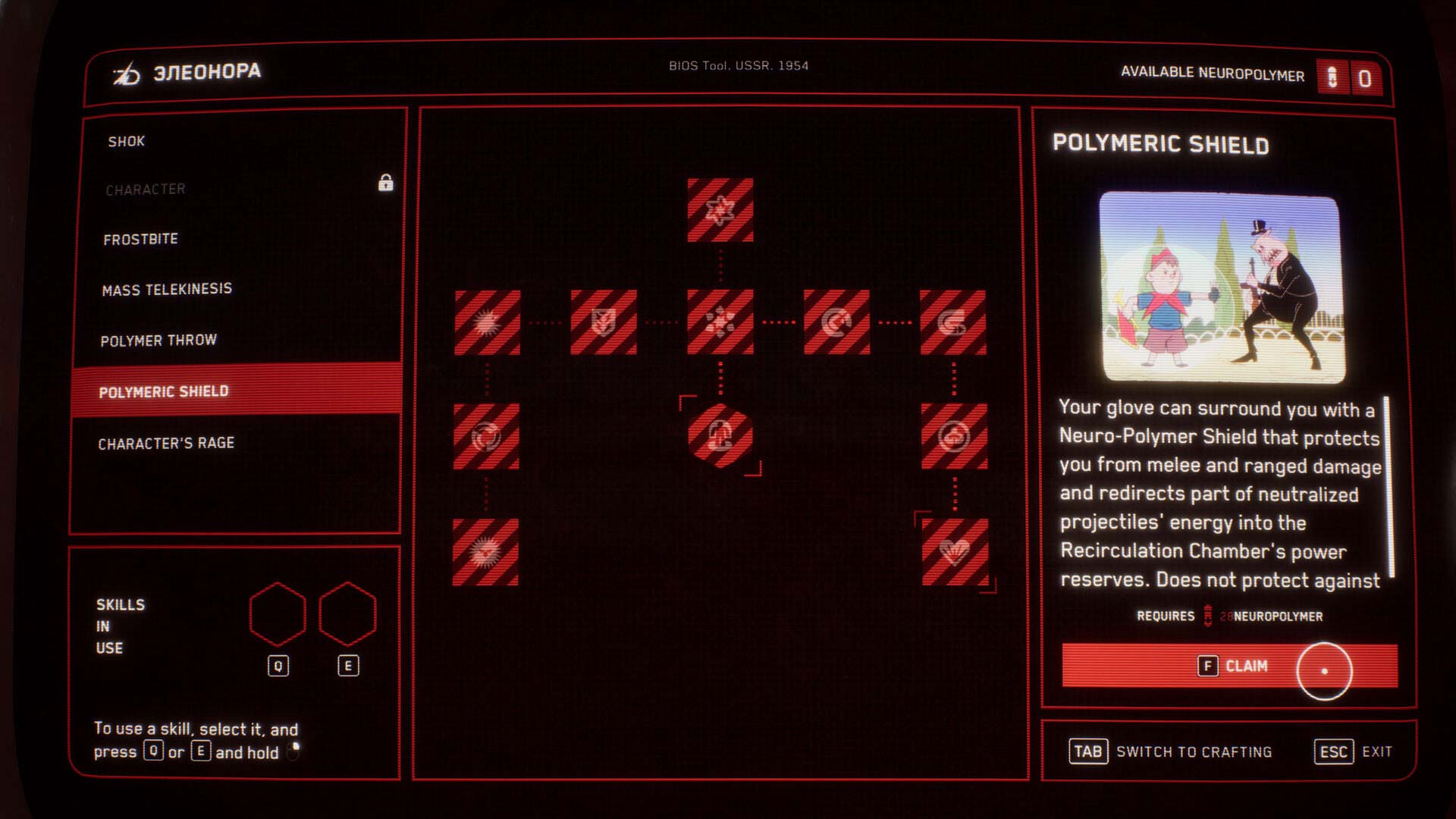
The entire country is scheduled to undergo Polymerization in a matter of days. However, as the Major enters the facility to meet with the Soviet head scientist, Dr. Dmitry Sechenov, almost all the robots in the complex turn hostile. Sechenov instructs Sergei to find the cause of the malicious robots and eliminate it.
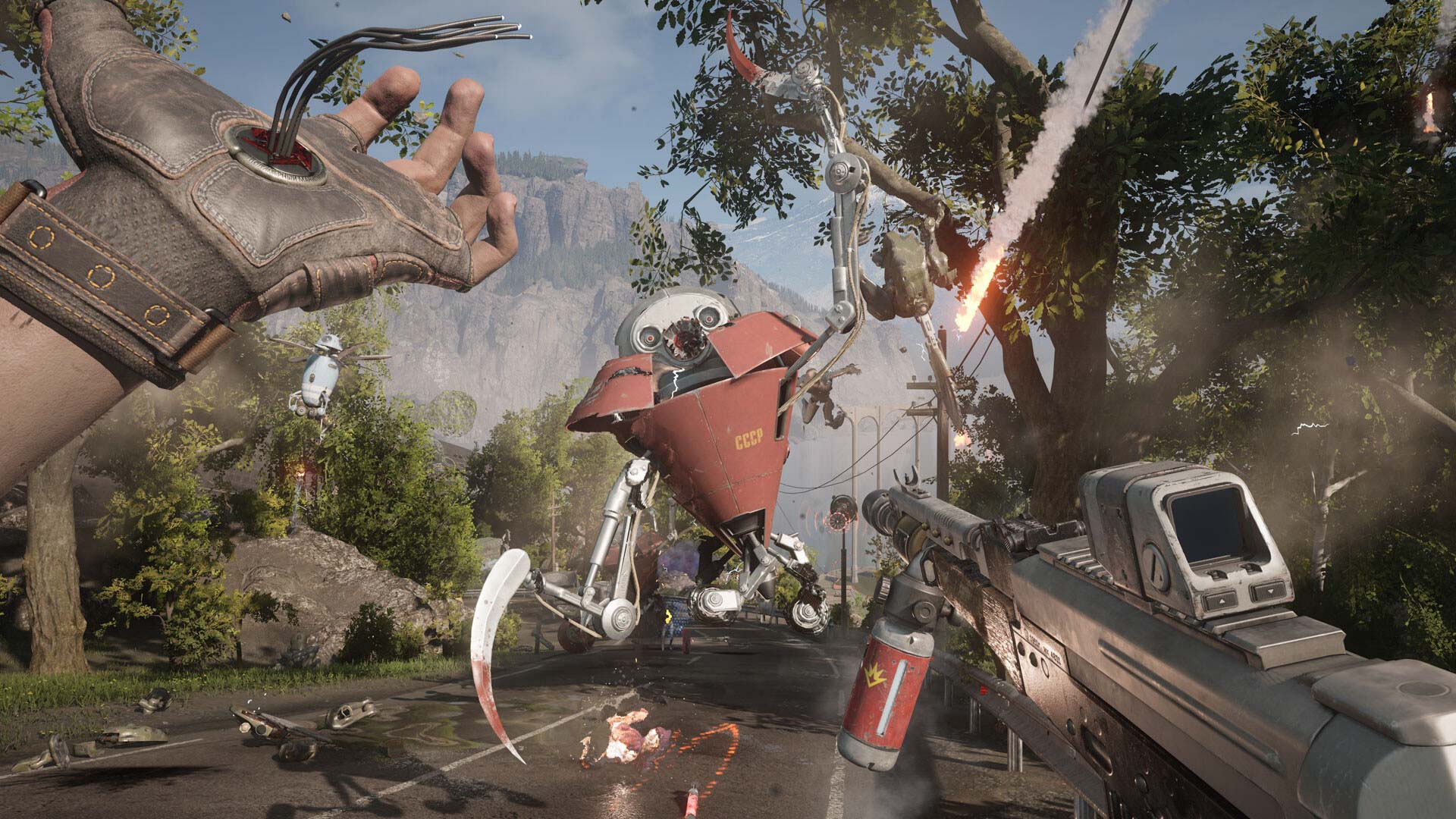
Fortunately, Sergei isn't alone. Sechenov has equipped him with the Polymer Glove, which includes an AI named Charlie, to help him on his way. However, things are more complicated than they seem, and the two soon discover that there are much graver threats to the Soviet Union than haywire robots.
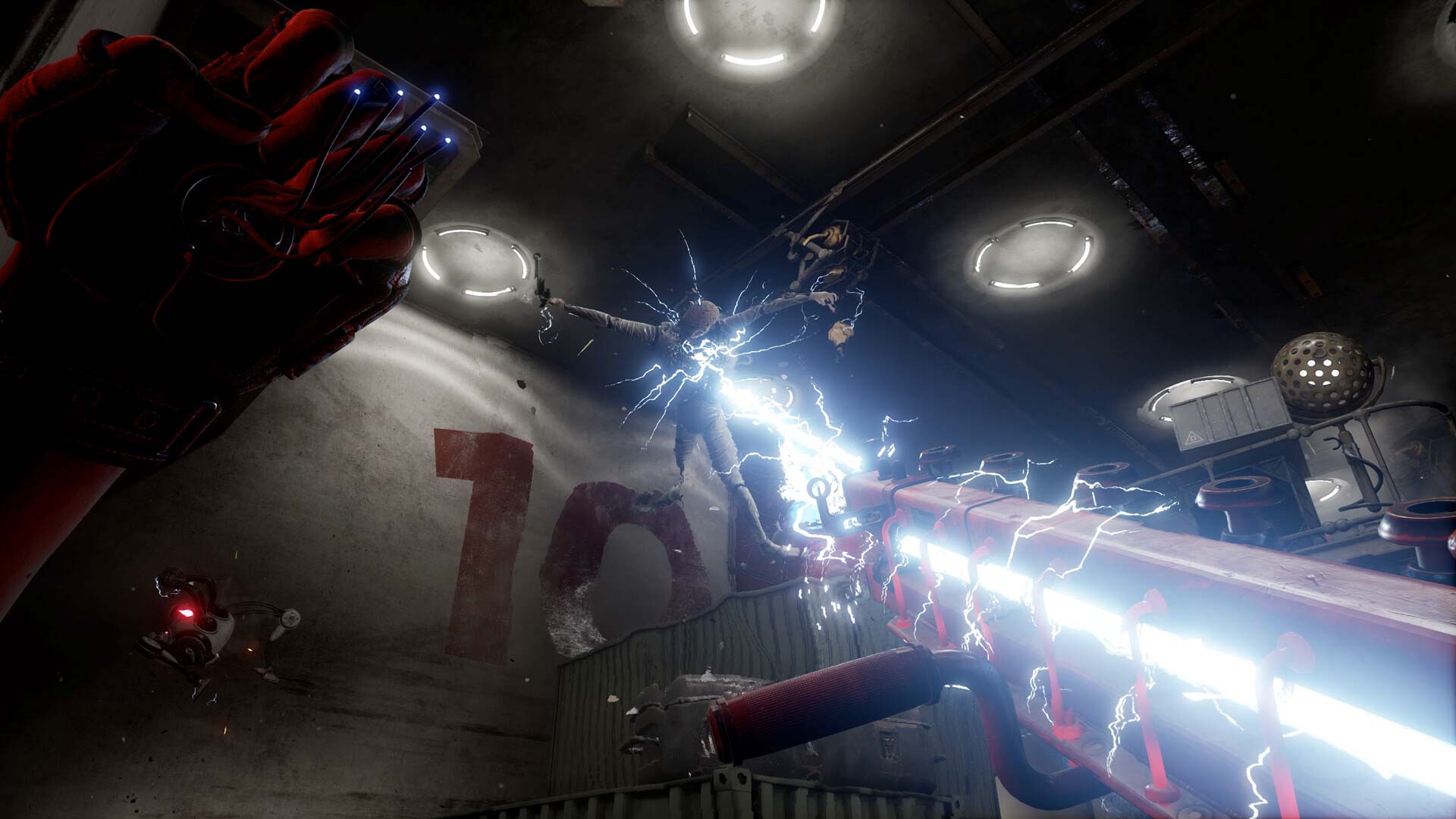
Unfortunately, Atomic Heart doesn't utilize its premise to the fullest. Instead of examining the ramifications of an alternate Soviet Union holding hegemony over the world, the game spends a good deal of the time telling jokes. That's not a terrible thing, and I even had a sensible chuckle or two. But the humor clashes terribly with the tone of the story.
One moment, the Major and Charles finish lamenting a gruesome scene of humans beaten to death by robots (and telling you their horrifying last moment, thanks to their neural implants). The next, the Major will talk about "crispy critters" or pick up a phone to prank call some hapless Soviet citizen. These tonal 180s happen often throughout the game, and I never really knew how to feel. If I meet a dead cow with a neural link and it starts to broadcast weird cow-related facts, is that comedy or tragedy?
Atomic Hearts review: Gameplay
The linear sections of Atomic Heart, during which you'll predominately explore vast experimental Soviet facilities, are put together well. The pacing tends to be good, with a decent mixture of combat, puzzles and exposition. When The Major isn't quipping about crispy critters (I cannot overstate how often he throws that catchphrase out there), Atomic Heart flirts with being a traditional big-budget title. However, Mundfish, like many other ambitious developers, committed the cardinal sin of breaking up a well-designed linear experience with a needless open world.
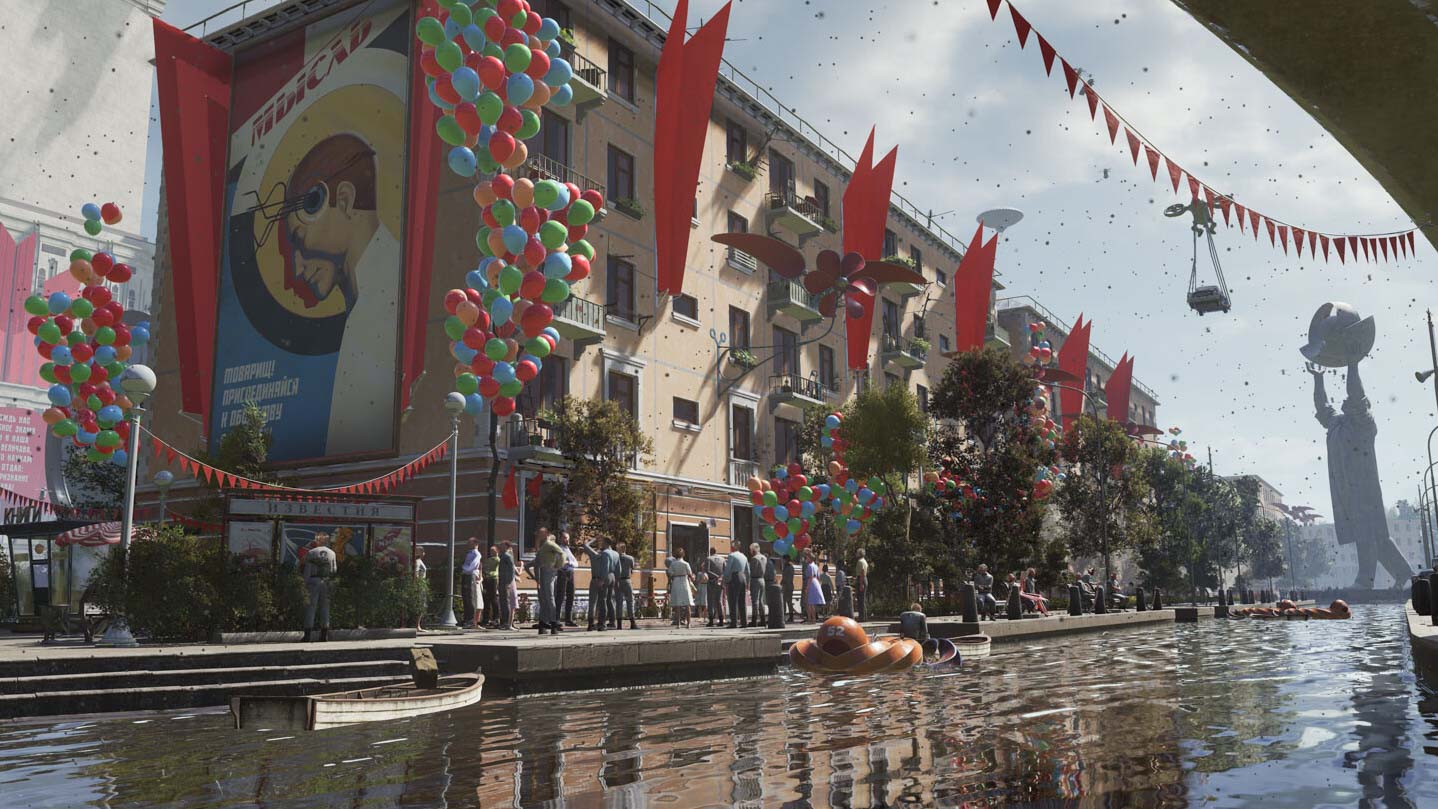
Around three or four hours into the game, you'll make it out of the first facility and take a monorail to the open-world area. The problem is, while there are plenty of side areas to explore for crafting materials and lore, they're not worth visiting.
In the open-world section, there's an infuriating mechanic where fleets of little helicopter drones called Pchela will repair most of the robots or cameras you destroy. Any effort you expend to clean an area out for safe travel gets erased quickly. You can't even take down the Pchela for good, because they spawn infinitely from their nest.
Because of this, the only places worth visiting outside of the main quest destinations are the testing areas that serve as mini-dungeons, and reward weapon upgrade blueprints. Trying to explain every nook and cranny for lore or Easter eggs is useless, because you're likely to expend more ammo and items than you'll get back.
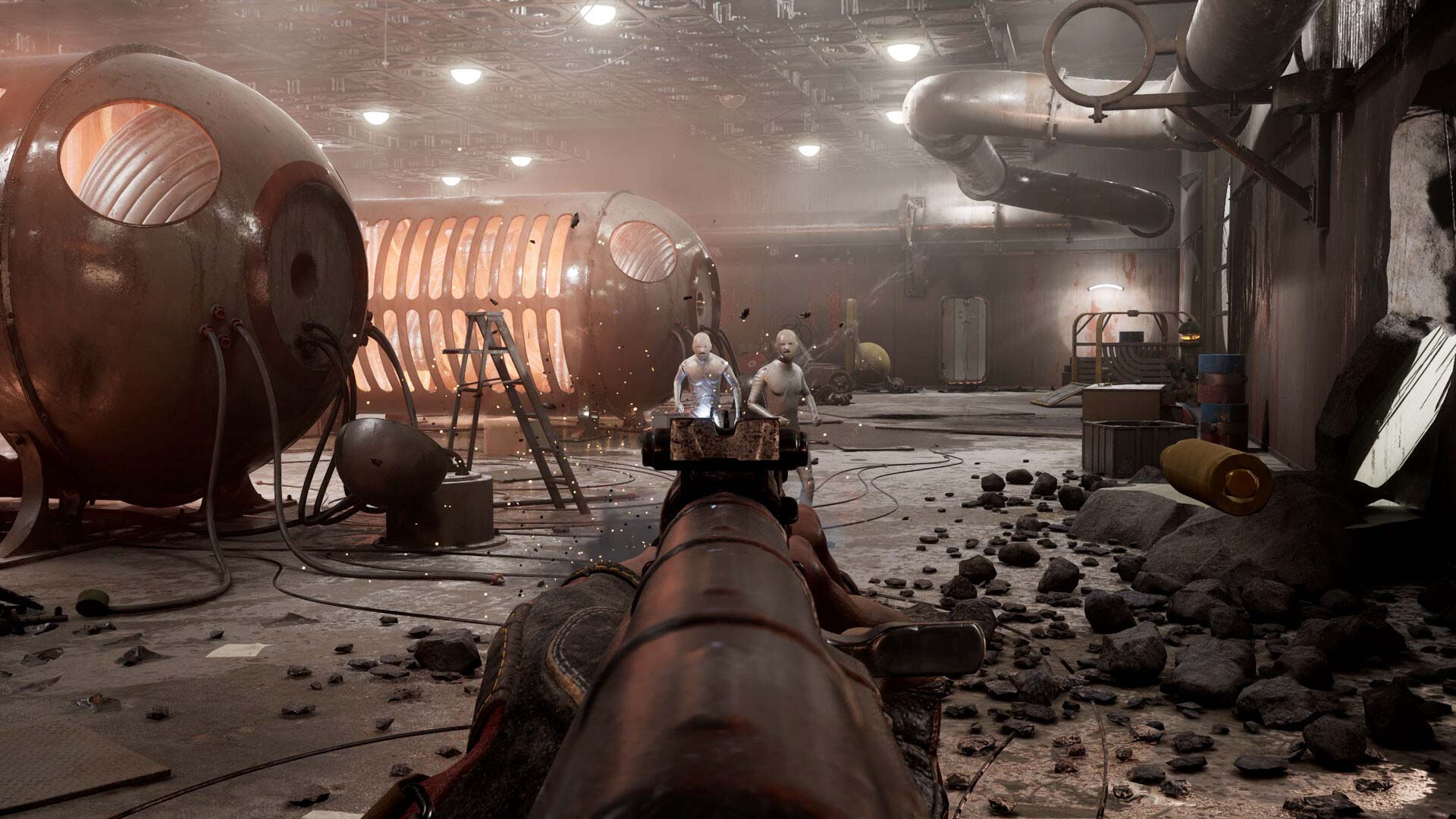
Of course, like every game that's been released in the last 15 years, you can use stealth to take down enemies or slip past them. The problem is that the open world has cameras everywhere. You can stun them with a blast from your shock power to temporarily disable them, but destroying a camera just results in those damn Pchela coming to rebuild it. Fortunately, every camera makes a loud, irritating noise, which makes them easy to locate. However, they're so densely packed that you'll quickly tune out this cue.
Atomic Hearts review: Sound and Visuals
Atomic Heart is an absolutely gorgeous game, and I commend the designers for crafting a fantastic atmosphere with Facility 3826. The installation is filled with monuments to alternate Soviet grandeur, which are primarily designed in the classical Stalinist style (with a touch of Brutalism and Albert Speer). However, these giant concrete edifices present a strong contrast with the technological marvels, such as fields of solar mirrors, that dot the facility.
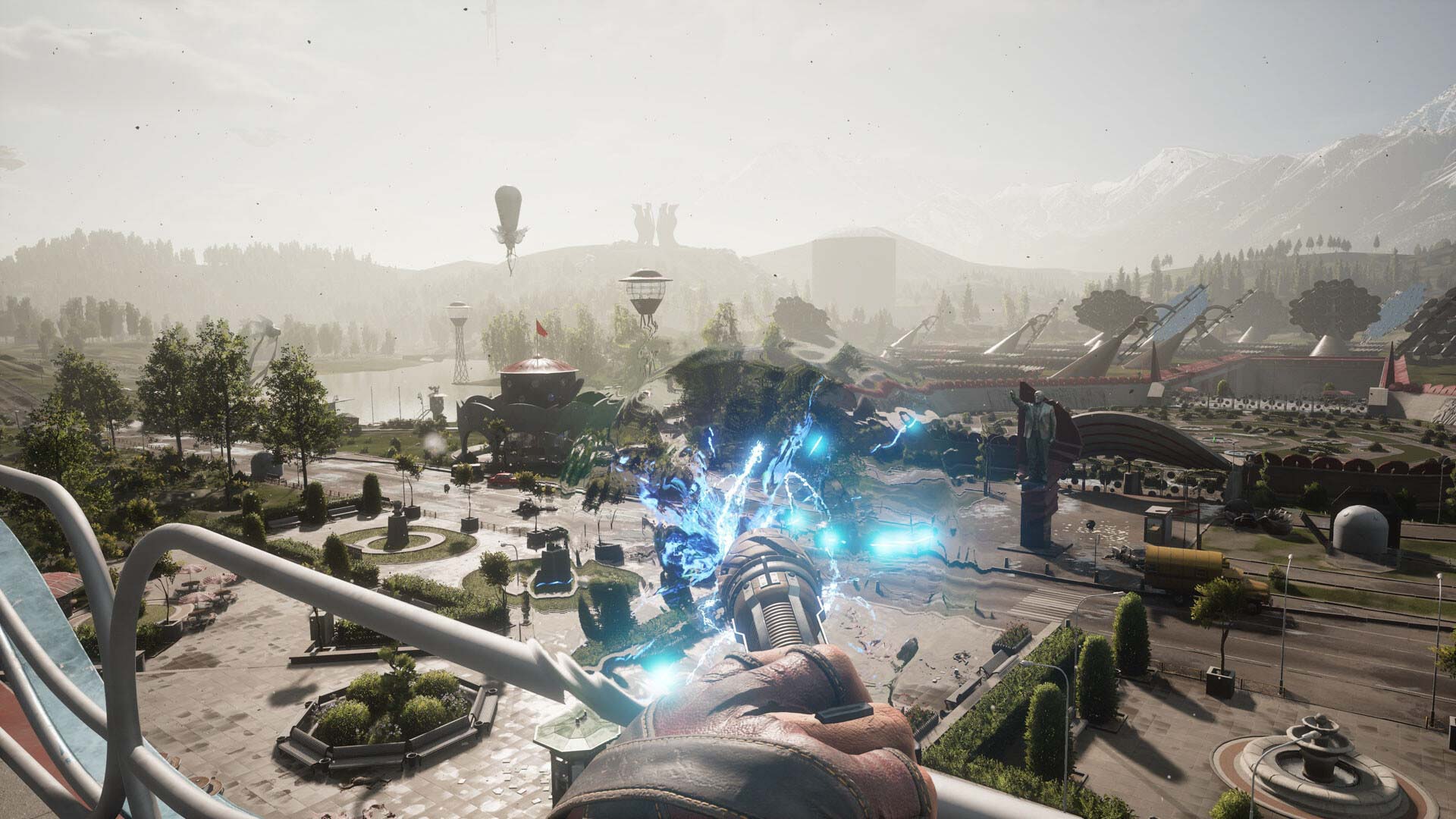
The enemy visuals are also excellent. Each foe you meet is intricately designed, and you can even see their internals on display in several areas throughout the game. Despite the terror that these foes inspire, it's easy to see what their uses were, back when their behavior was more benign.
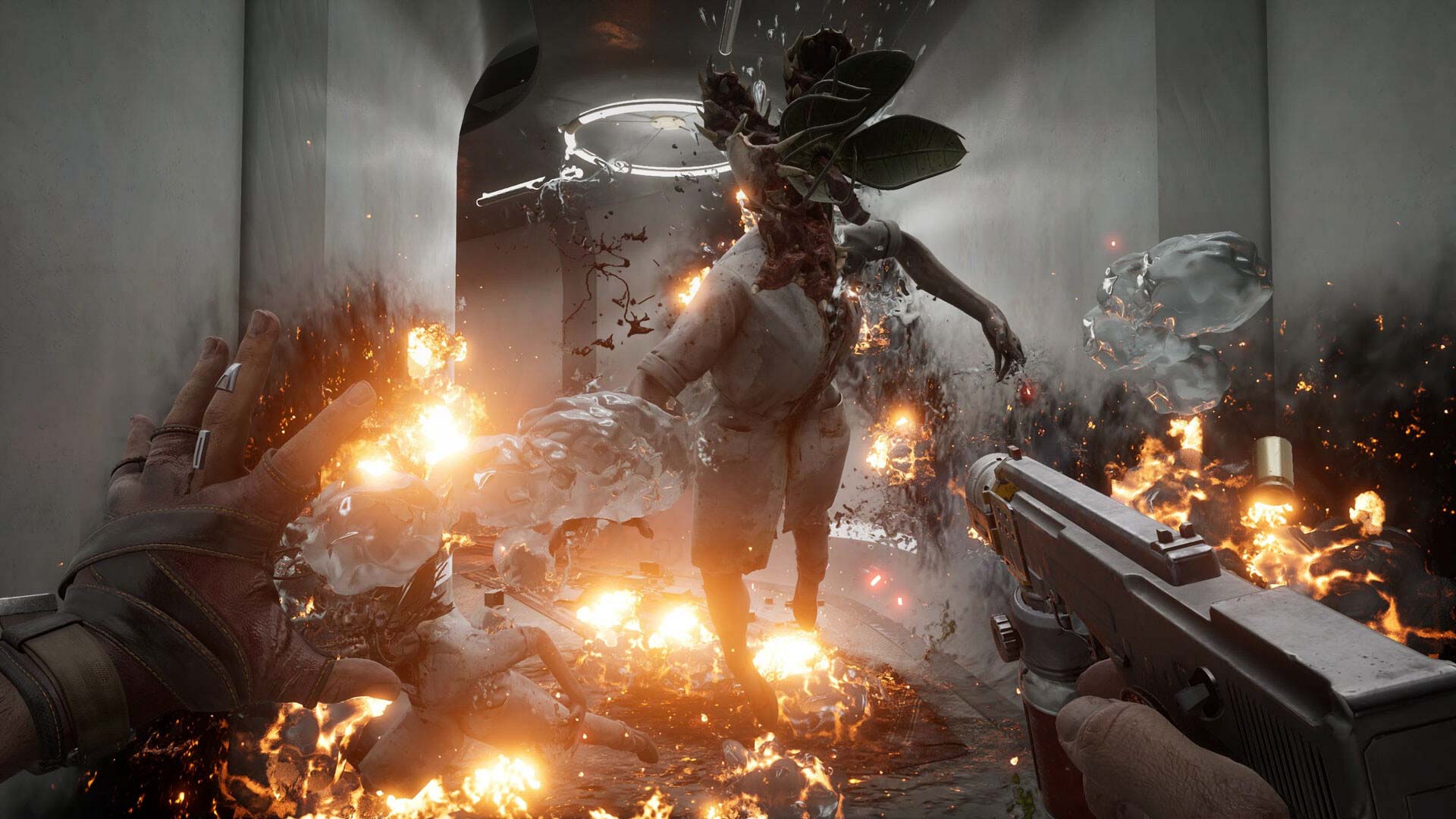
The sound, on the other hand, is a mixed bag. The music, composed by Mick Gordon, is excellent and the sound effects are fine, but the voice acting is exceptionally rough. I can't tell whether it's just plain terrible, or it's supposed to be tongue-in-cheek, or a mixture of both. I’m unsure why our protagonist’s catchphrase had to be “Crispy critters!”, but it's an odd, repetitive exclamation.
Atomic Hearts review: Combat
If you've played BioShock, then you're already familiar with the basic structure of Atomic Heart. It's a first-person shooter/RPG with upgradeable weapons and Polymer-based special powers, which are basically dollar-store Plasmids. You can upgrade your weapons (and upgrade those upgrades) and Polymers through a standard skill tree. There's nothing innovative about the system, but it works.
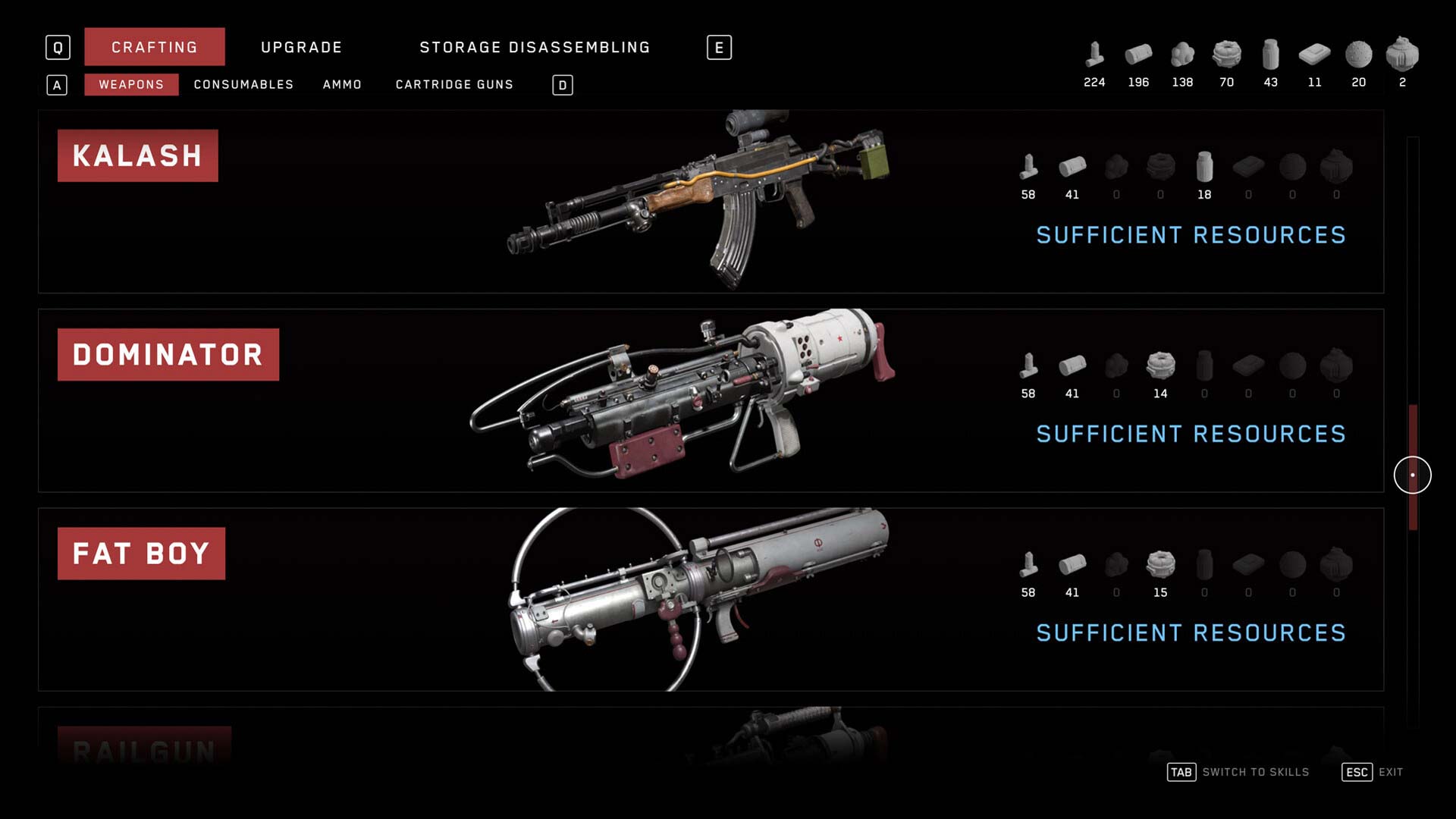
Combat isn't terrible, but you're mostly fighting robots, which tend to be bullet sponges. The most frustrating thing about fighting is that you have limited inventory space. You'll pick up large amounts of ammo and health items, but you can't carry that much on you. This wouldn't be a huge deal, but the game's stealth system is horrible, so attempting to conserve anything is futile.
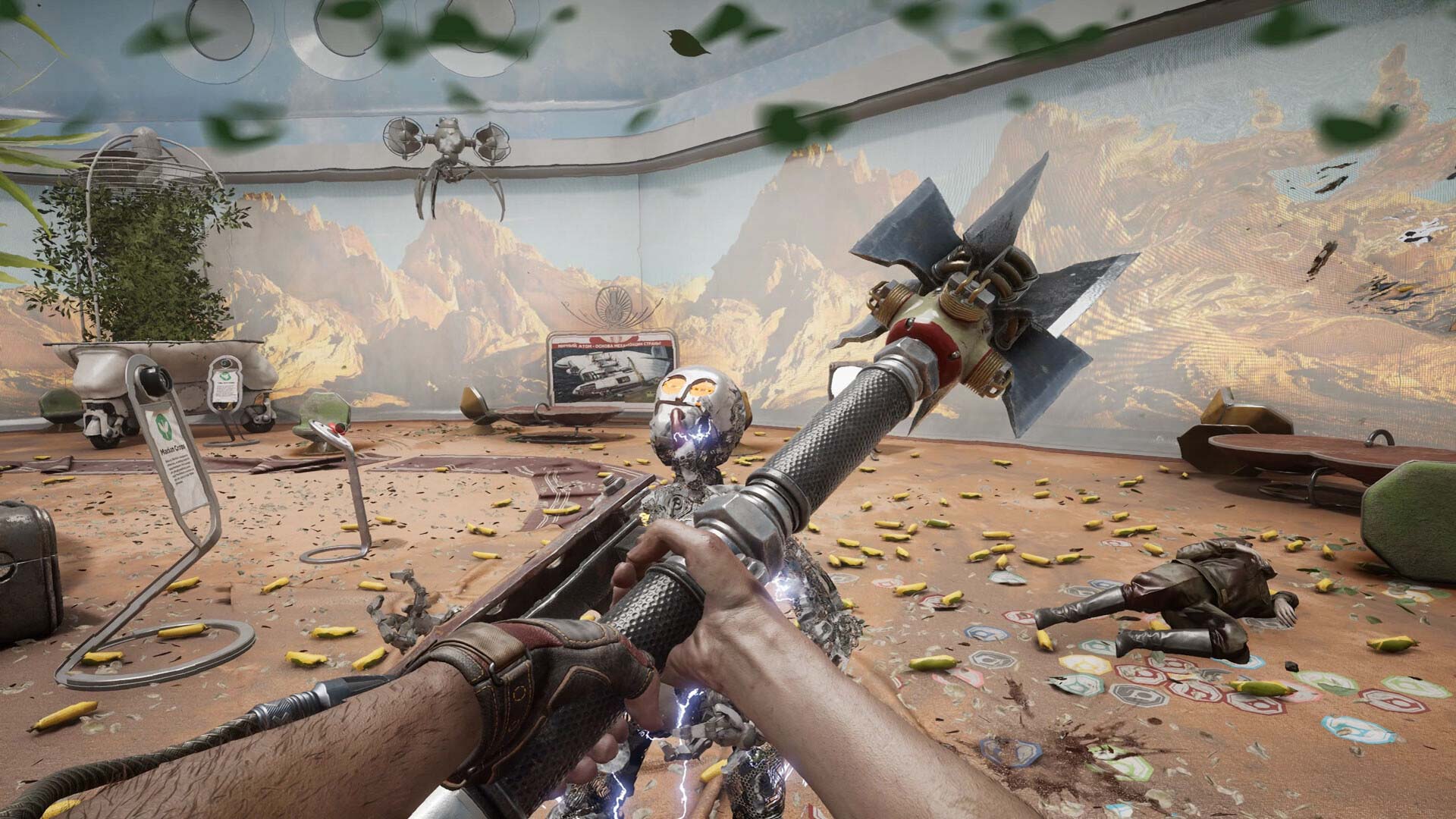
Fortunately, you don't have to worry about conservation. Once you hit the open-world part of the game, all robotic enemies get essentially infinite respawns. Break one, harvest its parts, and wait for the inevitable rebuild so that you can bash it open again. Your storage locker has tons of room, so you can craft as much ammo as you can afford, and restock as needed.
Atomic Hearts review: Verdict
Atomic Heart stands out from its peers. The world design is fantastic and packed with plenty of lore. Other aspects of the game are decidedly average, though. It's a 30-40 hour semi-open-world title that would have made more sense as a 20-25 hour linear game. The narrative is all over the place in tone, and I'm still unsure how I was supposed to feel about certain parts of it. The alternate-history Soviet Union setting is underutilized, too. Aside from the aesthetic and surface-level criticism, you could have set it anywhere.
Despite the game's flaws, I was entertained. When you catch Atomic Heart at its best, it's excellent, and it's easy to overlook many of its flaws. It's a great first effort from Mundfish, and I'm curious to see what the developer's sophomore title will bring.
Brittany Vincent has been covering video games and tech for over 13 years for publications including Tom's Guide, MTV, Rolling Stone, CNN, Popular Science, Playboy, IGN, GamesRadar, Polygon, Kotaku, Maxim, and more. She's also appeared as a panelist at video game conventions like PAX East and PAX West and has coordinated social media for companies like CNET. When she's not writing or gaming, she's looking for the next great visual novel in the vein of Saya no Uta. You can follow her on Twitter @MolotovCupcake.
